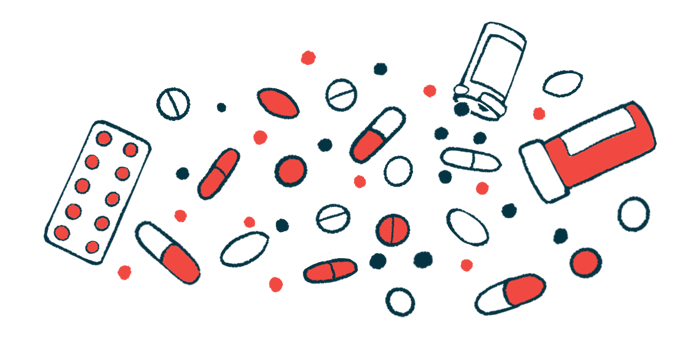Adherence to Evrysdi treatment found high in real-world analysis
Study based on how regularly SMA patients, caregivers refilled prescription

Spinal muscular atrophy (SMA) patients in the U.S. exhibited high rates of adherence to their prescribed regimen of Evrysdi (risdiplam) over a year, according to a recent analysis of pharmacy prescription fill data.
“High adherence to and persistence with [Evrysdi] were observed among patients with SMA over the 12-month study period, regardless of age and insurance coverage,” the researchers wrote in “Adherence and Persistence Among Risdiplam-Treated Individuals with Spinal Muscular Atrophy: A Retrospective Claims Analysis,” which was published in Advances in Therapy.
Because the analysis was based on how regularly a patient or caregiver refilled the prescription, it can’t be definitively established that patients were taking the medication, but researchers believe the findings reflect adherence because the medications’ availability suggest it was being used.
Evrysdi is a once-daily oral therapy that’s been approved in the U.S. for treating SMA since 2020. The use of SMA therapies like Evrysdi can improve motor function, prolong survival, and boost life quality relative to the natural history of disease, data indicate.
Determining adherence to Evrysdi
But patients must adhere to their prescribed regimens in the long term for any therapy to have maximum benefits. As the only available oral therapy, Evrysdi may be favorable for patients, but adherence to it in the real world has never been investigated, according to the researchers who conducted a retrospective analysis of specialty pharmacy claims data related to Evrysdi in the U.S. over a year. The researchers specifically evaluated how often and how consistently SMA patients filled their prescription as a way to estimate adherence and persistence to the medication.
This type of analysis captures at least 98% of patients treated with Evrysdi in the U.S., regardless of their insurance status, the researchers said.
Adherence was evaluated by looking at the proportion of days a person had the medication available to them in the time between their first and last refills at the pharmacy (variable interval) or in the time from their first fill to the end of the one-year analysis period (fixed interval). A person was considered adherent if they had the medication available at least 80% of that time.
Among 1,636 patients analyzed, 93% were found to be adherent based on the variable analysis and 79% with the fixed analysis.
Adherence was consistently high across age groups and regardless of whether the patients were covered by private insurance policies or public insurance programs such as Medicare or Medicaid.
Measuring rates of persistence
Persistence in using the medication was defined as having no gap in its supply for at least 90 days, or about three months, as determined by the distribution of pharmacy refills.
Most patients (80%) were found to be persistent with Evrysdi during the study. Across the group, persistence lasted a mean of 330.4 days during the study period.
Young patients ages 3-5 had the longest mean persistence at 348.2 days, and those on Medicaid (81%) showed the highest rates of persistence.
The scientists attribute the findings to Evrysdi being taken by mouth, which allows for the medication to be taken at home without having to schedule appointments at a care center.
When treatments are taken at home, however, there is no doctor to confirm that it is being taken as prescribed. The proxy indicators of adherence based on pharmacy refills don’t confirm that the medication was actually taken, “however, they can provide insights into whether medication was available to the patient,” wrote the researchers, who said future studies should explore the factors that influence medication adherence and the health-related impacts of nonadherence. They also said increasing the follow-up time would aid in understand long-term adherence and persistence,” the scientists wrote.








